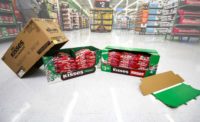Siemens event spurs innovative ideas
Quick-to-market, ultra-transparency and VR among trends talked about during Siemens brain storming event.

Quick-to-market food items that mimic fast fashion, ultra-transparency about how food is made, and virtual reality in retail stores. This is what industry experts think the food industry might look like in 10 years.
Siemens — a global powerhouse focusing on the areas of electrification, automation and digitalization — recently sponsored “Insights & Ingenuity: Digital Transformation in Food and Beverage Manufacturing,” in New York City.
The evening featured food industry leaders and influencers from across the country. Everyone was seated in groups and given discussion topics in an effort to spur conversation and inspire new ideas on ways to improve the food and beverage industry.
Specifically, the groups were asked to consider the following scenario: “We fast forward 10 years to a desirable future scenario for the food and beverage manufacturing industry. Together we describe the steps it took to get us there.”
Then, at the end, all of the groups presented their ideas.
One group talked about how food companies will have to continue to evolve new ways to meet an ever-increasing demand for new and exciting items. They suggested that food companies could learn some lessons from the fashion industry, where retailers such as Zara have a constant slate of new products flooding the market.
Specifically they talked about cutting down the time it takes for a product to go from the trial phase to the shelf. They suggested that 3D product modeling could speed things up, and so could updating how factories respond to new products and how they coordinate with brick and motor stores.
Another group talked about how companies need to develop ultra-transparency for consumers. It’s a scary proposition for some manufacturers, but the group insisted that shoppers are going to demand more and more of it.
That tied into the idea of companies using virtual reality in retail stores to show customers how their factories work and where their food comes from. It would be a big step toward transparency to be that open with the process, but it may soon be something customers expect. Manufactures could also allow shoppers to scan items and then see a video showing them exactly where it came from and how it was made.
One of the other groups talked about something that companies can only continue to ignore at their own peril — resource constraints. They suggested that companies will have to consider logistics when deciding where to manufacture their food and beverages. Companies also must become more and more aware of sustainability issues.
Obviously, it’s impossible to predict the future, but that doesn’t mean there aren’t obvious trends that food and beverage makers need to be looking at and responding to. Ignoring the future isn’t going to help anyone.
Looking for a reprint of this article?
From high-res PDFs to custom plaques, order your copy today!







